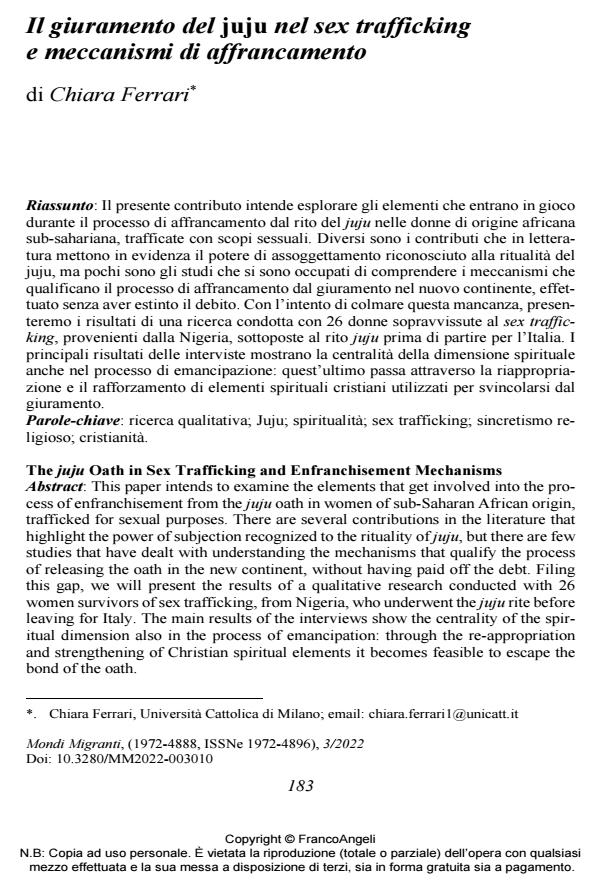The juju Oath in Sex Trafficking and Enfranchisement Mechanisms
Journal title MONDI MIGRANTI
Author/s Chiara Ferrari
Publishing Year 2022 Issue 2022/3
Language Italian Pages 20 P. 183-202 File size 214 KB
DOI 10.3280/MM2022-003010
DOI is like a bar code for intellectual property: to have more infomation
click here
Below, you can see the article first page
If you want to buy this article in PDF format, you can do it, following the instructions to buy download credits

FrancoAngeli is member of Publishers International Linking Association, Inc (PILA), a not-for-profit association which run the CrossRef service enabling links to and from online scholarly content.
This paper intends to examine the elements that get involved into the process of enfranchisement from the juju oath in women of sub-Saharan African origin, traf-ficked for sexual purposes. There are several contributions in the literature that highlight the power of subjection recognized to the rituality of juju, but there are few studies that have dealt with understanding the mechanisms that qualify the process of releasing the oath in the new continent, without having paid off the debt. Filing this gap, we will present the results of a qualitative research conducted with 26 women survivors of sex trafficking, from Nigeria, who underwent the juju rite before leaving for Italy. The main results of the interviews show the centrality of the spiritual dimension also in the process of emancipation: through the re-appropriation and strengthening of Christian spiritual elements it becomes feasible to escape the bond of the oath.
Keywords: qualitative research; juju; spirituality; sexual trafficking; religious syn-cretism; Christianity.
Chiara Ferrari, Il giuramento del juju nel sex trafficking e meccanismi di affrancamento in "MONDI MIGRANTI" 3/2022, pp 183-202, DOI: 10.3280/MM2022-003010